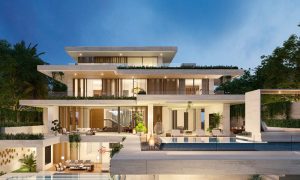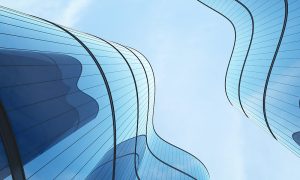Qatar’s construction kick-off
Over the next 11 years, Qatar will launch hundreds of regeneration and development projects to modernise the small gulf emirate in time to host one of the world’s most famous sporting tournaments.
Prior to FIFA’s announcement, Qatar held a 15% share of the regional construction industry, yet international consultant Deloitte names it a “key market”, predicting CAGR of 12% between 2010 and 2014.
Since 2004 the per capita income of Qataris has doubled and the country has achieved a consistently high GDP, which even defied world-wide recession.
Following FIFA’s decision to award Qatar the 2022 World Cup, last December, the General Secretariat for Development Planning (GSDP) stated that 200 new construction projects would be launched in the first quarter of 2011; estimated to cost between US $60-$80 billion. Additionally, by 2022 Qatar will need to double the number of its hotel rooms, refurbish three stadiums and build nine more.
Referring to it as the country’s “war footing”, GSDP general manager Sheikh Hamad bin Jabor Al Thani said the ventures also form part of the National Development Strategy (NDS) and will involve both the public and private sectors.
“Many of these projects were already planned and will now be prioritised and put out to tender. All the projects for 2022 can certainly be completed in time, providing the traditional tendering process is streamlined,” notes Tony Saadie, executive general manager of Al Habtoor Leighton Group in Qatar.
The group has been operating in Qatar since 2005, on projects such as Al Faisal Tower, Duhail and Umm Qarn Reservoirs and Al Shaqab Equestrian Academy.
The opportunities and benefits are not solely reserved for Qatar; the bid has provided a boost for construction and real estate companies GCC-wide. Shares in Emaar Properties, Arabtec, Drake & Scull and Aldar Properties all reportedly surged following the announcement and Doha’s index hit a 26-month high.
“The stadiums will stimulate a significant amount of planning and construction activity, especially in building and the related cooling and infrastructure. “Other opportunities lie in retail branded merchandise, transport, and leisure and business tourism,” explains Grant Salter, executive director for Grant Thornton Middle East Advisory Services.
Predicting the “sheer volume” of construction would see an influx of off-shore contractors, including European and Asian stadium contractors, Salter adds that currently underdeveloped leisure and tourism industries will also provide significant opportunities.
Under construction
The World Cup is only one element of Qatar’s development goals. Like its neighbours, future projected growth is outlined in a number of strategies and, as the GCC’s third largest infrastructure market, public-private partnership (PPP) funded projects (excluding oil, gas and petrochemicals) total more than $100 billion.
The long-term plan is the Qatar National Vision 2030. Designed around the four “pillars” of human, social, environmental and economic development, it was approved by Emiri decree in 2008 and aims to preserve traditions, promote modernisation and manage economic growth in the country.
To concentrate development in the short term, the National Development Strategy 2011-2016 prioritises the creation of a knowledge society, actual and abstract, overseen by the Qatar Foundation.
Among the major planned projects is Education City; a 2500-acre hub of seven “world-class” universities and the Qatar Science and Technology Park; the foundation’s “flagship” project. Qatar and its surrounding villages will receive 12 new schools; with seven contracts already awarded.
Transport infrastructure will also receive upgrades, on both small and record-breaking scales. The “Friendship Bridge”, which is also known as Bahrain Causeway, is a 40km, $3 billion bridge linking Qatar to Bahrain and reducing travelling time between the two countries to 30 minutes.
According to publically available tender information, contracts are being re-negotiated following a six-month delay.
Furthermore, a $25 billion investment will fund the railway network and metro system; linking the airport, Doha city and suburbs, as well as connecting Qatar to the wider GCC. “It is essential that only experienced contractors who are already established in Qatar are appointed to construct the critical and supporting infrastructure,” Saadie advises, naming the highway, metro, high-speed rail network and Doha Port as urgent priorities.
A major element of the upgrades is the expansion of Doha International Airport; based 4km away from the existing airport, 40% of the site will be built on reclaimed land and feature two of the longest commercial runways seen in the world.
The country is also benefitting from a number of high-profile projects in the retail, real estate and tourism sectors, inspired by the country’s cultural heritage.
Mixed-use development The Pearl Qatar, a man-made island off the Arabian Peninsula, is described as a “unique living and cultural experience”, incorporating the country’s “past and present”. Developed by Qatar’s largest private sector shareholding company United Development Company (UDC) it is the country’s first international luxury residential development offering international investors freehold title ownership.
The second lifestyle project is a 37km2 waterfront city, Lusail, 15km north of Doha. Providing a “full array of community needs”, Lusail will also meet objectives from the Qatar Sustainability Assessment System (QSAS), the country’s green build code.
The key retail development is a QR 6 billion joint venture between Al Futtaim, Qatar Islamic Bank and Aqar Real Estate Investment.
It will be the country’s largest multi-purpose complex with a full retail centre, an entertainment park and two hotels.
Provisionally called Entertainment City, construction will begin this year, with the first phase due in 2012.
The regeneration of Doha city, a project formerly known as the Heart of Doha, is a multibillion dollar master-plan developed by Allies and Morrison with Arup and Edaw. Now known as ‘Musheireb’, the project will regenerate more than 200 city-centre buildings.
According to project updates, shortlisted contractors have been invited to submit bids.
Going green
Like the majority of new projects in the region, Qatar’s future vision is a green one, guided by the Qatar Green Building Council and QSAS.
Projects, particularly those related to 2022, promise “tradition and innovation”, with an agenda for solar-powered “eco-stadiums”, which can be dismantled for use in developing countries, low-carbon transport systems, high-quality building materials and an emphasis on reduced water consumption.
Referring to the system as “revolutionary”, Fouad Hamdan, managing director of green building material manufacturer Domopan, explains: “QSAS defines the way the construction industry operates and the impact it will have on the country’s social, environmental and economical systems.
“QSAS guidelines improve the quality of construction, help regulate the materials and systems being used in real estate projects and consider the outcomes and results of such construction.
By applying QSAS, construction will become a major driver in how the building will function and operate throughout its entire lifecycle,” he adds.
Easy money
Business conditions in the country are widely regarded as favourable, with one of the lowest tax regimes in the world and a second-place ranking in the World Bank Group’s Ease of Doing Business report 2010.
Since October 2000, new sectors have been open to 100% foreign ownership; corporate taxes are set at a flat-rate of 10% and credit is widely available.
In its 2010 Country View Report, Real Estate analyst CB Richard Ellis claimed the political environment is one of the most stable in the region, ranking the country the least corrupt in the Middle East.
“Qatar presents one of the fastest-moving economies with the highest GDP. It provides very lucrative opportunities and a very promising future,” says Hamdan.
Explaining how the company enjoys “considerable opportunities”, Hamdan adds: “When we invested in a factory in Doha in 2007, it was because we believed in its leadership, in its vision and in its rewarding cultural, social and economical values.”
But there can be draw backs.
“Qatar is well ahead of its regional counterparts; we have found it a great country to operate from and our staff find that it is a good country to live in,” says Saadie.
“However, it takes time to set up business and to establish supply chains. Businesses that are not already well established in Qatar and are interested in short-term business opportunities will be disappointed, as you must invest time, resources and capital to be successful.
“It will also be of critical importance that plant, material and staff resources are able to enter Qatar easily to enable on-time construction of the numerous projects required by 2022,” he warns, predicting that rapid growth in global markets will increase the likelihood of resource price inflation.
Despite the prediction, the Qatari market is robust; wavering only in light of developer confidence and consistently producing a high GDP.
Commenting that there is high demand in real estate, driven in part by a growing expat population, Hamdan adds: “Qatar’s government has a clear vision that does not relate to any event that might take place till 2030, and which is becoming the basic foundation of how the country is developing.
He concludes: “With this clear vision and with a strong and decisive leadership capable of achieving what it aspires to, the opportunities in Qatar will never fade away.”

























